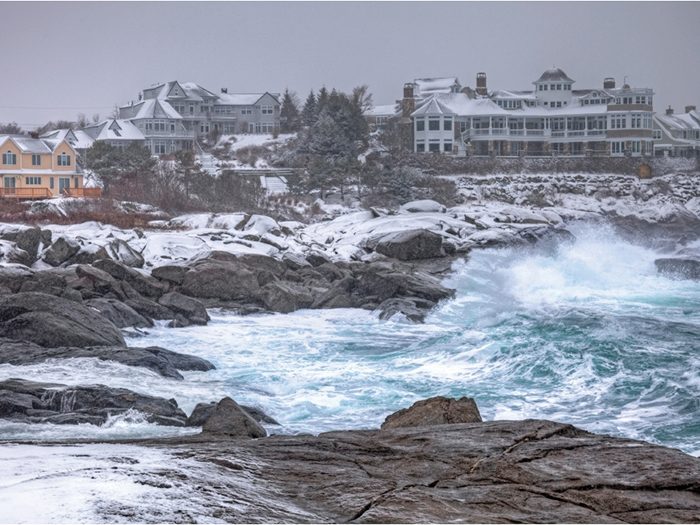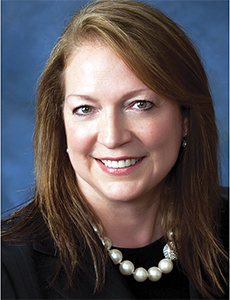High Net Worth
Own a House on the Beach? Chances Are You’re Underinsured.

From the Hamptons and Malibu to Miami and Palm Beach, America’s high net worth class likes building lavish homes on the water.
Yet these multi-million dollar estates are exposed to growing risk from sea level rise and increasingly powerful storms.
The fact that these structures are generally non-primary residences makes them even more vulnerable, and their big price tags can make them expensive to fully insure. Many of these homeowners are turning to excess flood insurance policies while others are carrying bare-bones coverage and keeping their fingers crossed.
Flood Risk on the Rise
Coastal areas have always been at a greater risk of flood. Those risks are rising. According to the National Oceanic and Atmospheric Administration, sea levels rise at a rate of an inch every eight years.
This pushes storm surges farther inland than they once did and is creating more frequent nuisance flooding. Research from Zillow estimates that 1.9 million homes worth more than $800 billion are at risk of being underwater by 2100 due to climate change. The biggest risks are in Florida, New Jersey, Massachusetts, California, South Carolina, Hawaii and North Carolina.
The Private Risk Management Association (PRMA) surveyed agent and broker members in 2017 about their high net worth clients and found nearly 54 percent were unprepared for flooding.
And while more than 60 percent said catastrophic weather events like hurricanes and floods kept their clients up at night in 2017, nearly three-quarters said they wouldn’t increase their preparedness levels.
“Many still think it’s not going to happen to them. It’s just a mindset that people continue to have,” said Lisa Lindsay, executive director, PRMA.
In recent years, weather events have flooded areas previously not considered high risk. The U.S. has now experienced more than two dozen 500-year flood events since 2010, including Hurricane Matthew in 2016 and Hurricane Harvey in 2017, which caused $125 billion in damages and catastrophic flooding in Houston.
In 2012, Hurricane Sandy flooded thousands of homes in the Northeast that previously were never considered at risk for flooding.
Going strictly off FEMA flood maps to gauge risk is an “outdated way of thinking,” Lindsay said. A study in Environmental Research Letters found more than 41 million Americans live in a 100-year flood zone, more than three times as many as the FEMA estimate.
Some FEMA flood maps are years outdated and don’t account for how buildings are constructed, rapid rain accumulation and population growth. Larry Larson, senior policy adviser and director emeritus, the Association of State Floodplain Managers, told Bloomberg the maps “will always be obsolete the day they come out.”
Moving to Excess Flood Insurance
PRMA is working with the industry and high net worth homeowners to promote better ways to assess individual risk exposure. The PRMA survey found half of homeowners living in high-hazard areas didn’t take steps beyond purchasing basic flood insurance, and less than 20 percent purchased excess flood insurance.
This often leaves a big gap in coverage for high net worth homeowners because NFIP limits are only $250,000 for structures and $100,000 for contents.
“That’s obviously not going to cut it if you have a $10 million house,” said Will Van Den Heuvel, senior vice president, personal lines, Cincinnati Insurance Companies.
Excess flood insurance is available in most areas, Van Den Heuval said. Cincinnati offers high value home insurance customized for high-end properties with deductible options up to $500,000. Many excess policies cover flood and multiple risks for primary and vacation homes with coverages up to $5 million for structures and $2 million for contents.
Despite the availability of coverage, high premiums and low perceived risks can still leave some questioning the value of their policies, said Charles Williamson, CEO, Vault Insurance. High net worth individuals can be just as price sensitive as general consumers, and many have raised their deductibles, lowered coverage or even gone without coverage at all.
“The discussions are the same, the numbers are just larger. They might wonder why they’re paying $100,000 per year for hurricane insurance when they haven’t had one in years,” Williamson said.
Moving Beyond Insurance
Many municipalities update building codes after major events to reduce the risk of damage in the future. Dade County in Florida imposed significant building codes in 1994 after Hurricane Andrew, and the rest of the state followed suit between then and 2002.
While those codes are some of the most rigid in the country, they’ve been credited with reducing damage in subsequent storms. Yet in parts of the Northeast, such as Long Island, there aren’t any particular hurricane building codes.
“Ultimately, the closer you are to the water, the more expensive it becomes to the point where customers may do the calculation that it’s just not worth it,” — Will Van Den Heuvel, senior vice president, personal lines, Cincinnati Insurance Companies
“It’s very much market by market depending on elevation and how the home is built,” Williamson said.
Flood policies are usually based strictly on flood zones and elevation of the home, but other variables can come into play in the private market. Most high net worth homeowners buy a FEMA policy first and then purchase excess coverage in place to fill the gap, Williamson said.
Increasingly sophisticated mapping and pricing technology is enabling excess coverage carriers to better price risks depending on elevation and design, meaning many policies can be priced on a house-by-house basis.
“But ultimately, the closer you are to the water, the more expensive it becomes to the point where customers may do the calculation that it’s just not worth it,” Van Den Heuvel said.
High net worth homeowners are also taking measures beyond flood insurance.
New construction is putting homes higher above sea level. Mechanical equipment, such as HVAC units and hot water heaters, are being placed on higher floors. And in Florida, many beachfront coastal homes now have “floodable” first floors used for parking and patio space with livable space placed high enough that most storm surges can run beneath the home.
There are also inflatable water barriers that can be used to keep out floodwaters up to three feet high. Innovative yet expensive designs can also reduce risk. In “dry floodproofing,” walls, doors and windows are made watertight to keep water entirely out of the building.
With “wet floodproofing,” the building is designed to let water flow through the building and minimize damage by moving power outlets up the wall. Whereas flood risks can’t be fully eliminated, homeowners can reduce the cost of potential damages.
“There are so many things that people can do. We’re trying to change the mindset that all they can do is buy insurance. There’s plenty to do to minimize the losses, and it’s necessary given the frequency of disasters,” Lindsay said. &











